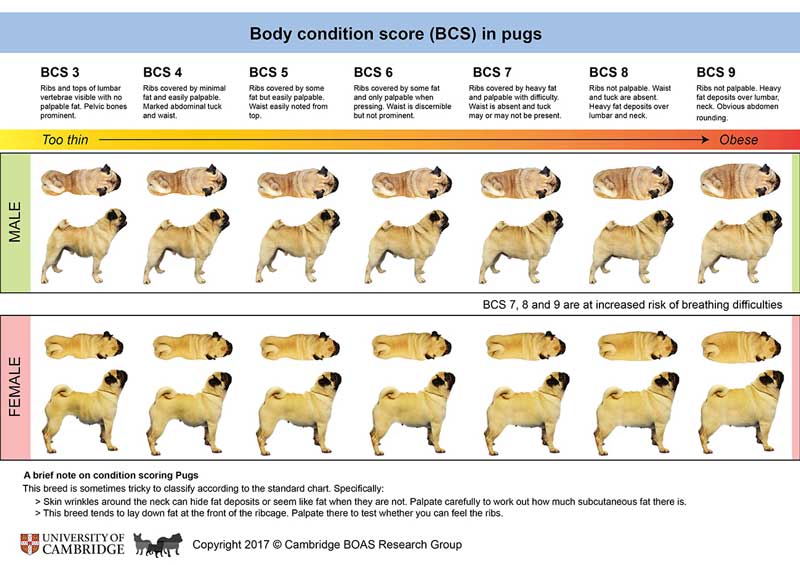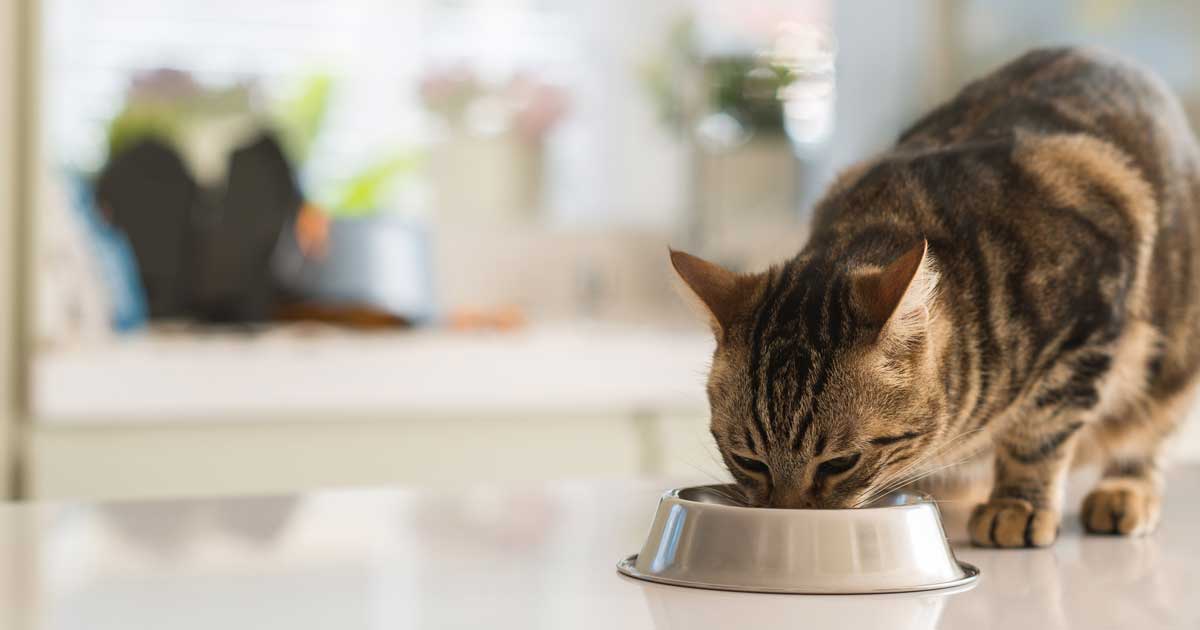13 Sept 2021
Nutrition: making it easier to digest
Nicola Lakeman outlines what needs to be considered by the VN when advising a client on a pet's dietary requirements.

Image © Krakenimages.com / Adobe Stock
Lots of veterinary professionals really shy away from discussing nutrition with pet owners as they are worried that they will enter a lengthy, sometimes very emotional and passionate conversation.
Nutrition is very important – every animal has to eat – and consuming the right diet has a large impact on health and overall welfare of the animal. A lot of confusion exists when it comes to nutrition, and we need to sift through what pet owners do and don’t know to make a good nutritional recommendation.
All animals that are seen in a consultation (whether seeing an RVN or a vet) should undergo a nutritional assessment as part of the five vital assessments (Freeman et al, 2011). The WSAVA has developed a global initiative to standardise five vital signs as part of the standard physical examination for all small animals. These are:
- temperature
- pulse
- respiration
- pain assessment
- nutritional assessment
Nutritional assessment can be based on visual observations, such as body condition score (BCS) and muscle condition score (MCS), and specific measurements such as weight and body measurements.
When calculating a lean body mass for an individual, the animal must be visibly assessed and palpated. The BCS can be based on a five or nine-point scale, though most people when using the five-point scale adopt half points, which turns it into a nine-point scale. Some breeds, such as pugs, do not suit some aspects of the BCS index (Figure 1).

The use of BCS can prove to be very useful with patients suffering from chronic conditions that can affect weight and body condition. Patients suffering from cardiac conditions can develop ascites – this fluid collection can cause an overall gain in bodyweight. The patient’s BCS, however, can actually be decreasing as lean body mass is lost. This highlights the importance to monitor BCS alongside weight at each consultation.
The WSAVA has published excellent nutritional recommendation guidelines and they are widely available via its website. These also include detailed guidance on how to incorporate them into veterinary practice.
Clients need to be made aware whether their pet is above, below or at an ideal bodyweight. Many clients are not aware of this and it is important the subject is discussed with clients.
People’s perception of what is an ideal bodyweight and shape has been skewed greatly. Studies have shown that pet owners are not able to correctly determine whether their pet is at its ideal bodyweight (Eastland-Jones et al, 2014; Courcier et al, 2011).
A fear exists that just starting the discussion of nutrition can open a whole can of worms regarding which diet is best, but there are ways to give recommendations that are in the best interest to the animal and the owner. Ninety per cent of pet owners have reported they want a nutritional recommendation from their vet, but when being seen in practice, only 15% of clients actually perceived receiving one (Pet Nutrition Alliance, 2011). Pet owners want you to discuss nutrition with them; don’t be afraid to talk about food.
A vast array of life stage diets are available on the market, and this can be subdivided again to encompass neutered pet diets, breed-specific diets and those with different requirements, (whether a mobility or hairball diet). A regular question asked is whether pets require these different lifestage diets or is it all a marketing ploy by the nutrition companies?
The right diet for the right pet can be a difficult thing to find, and can require a balance between owner choice and pet choice. Specific requirements exist for different life stages of cats and dogs – and, therefore, different nutrient requirements to meet these demands.
Cats and dogs require about 40 different essential nutrients. These need to be in the correct form, in the right amount (balanced), to deliver complete nutrition; too much or too little will cause deficiencies or toxicities.
Food comparisons
The quality of the food cannot be assessed from the food ingredient label – especially the true digestibility of individual nutrients and the overall digestibility of the diet. The bioavailability of nutrients is not disclosed on the label and does play a factor when comparing diets. The typical analysis states the percentage of protein, oil (fat), fibre, ash and moisture (when over 14%).
The moisture content of the diet has a direct effect on the remaining ingredients, with moist diets being more dilute than dry diets. Therefore, direct comparison of the typical analysis is inaccurate when moisture contents differ. Comparisons should only be made when using dry matter basis (DMB) percentages or when based on energy content (for example, per 100kcal).
For example, Diet A might contain 0.52% phosphate on a DMB, but Diet B might contain 0.8% on a DMB. For a renal patient, you might assume Diet A would be a better food to feed. We also need to look at the overall amount consumed, though; if the overall amount of Diet A needs to be fed at higher levels, the overall consumption of phosphates might be more than if we fed Diet B.
Proprietary diets are those that are commercial-made – that is, processed – and fall into two basic categories: complete or complementary.
Complete diets
Complete diets are those that provide a nutritionally balanced and adequate diet when fed as the sole source of food. All the nutrient components are provided in the correct ratio, for the specific life stage, and do not require any additions from any another food source.
Adding other food sources to the diet in large quantities can make the overall daily intake of food nutritionally unbalanced.

Complementary diets
Complementary diets are those that do not provide a nutritionally balanced diet when fed alone. These diets are designed to be fed in combination with another diet to form a balanced and adequate diet.
All treats and snacks are labelled as complementary foods – and, therefore, should only make up a small portion of the daily ration. Figures for treats are normally between 5% and 10%. A 4kg neutered adult cat will need roughly 238kcal per day, which would equate to roughly a maximum of 23 calories a day in treats.
Pet food labelling
Many terms are used by pet food manufacturers – open, fixed and closed formulation; natural foods; organic; breed and life stage-specific; and hypoallergenic. Understanding of these terms is vital to interpret the basis of the diet and give pet owners a nutritional recommendation.
Some of these terms have very strict definitions, as in organic; however, some do not – for example, hypoallergenic. Some have very loose definitions – for example, natural.
Other factors such as availability of the diet, pack sizes that the diet is sold in, price and owner preferences also need to be considered.
Owner preferences can include whether the food is “ethically” manufactured, organic foods, wet foods rather than dry and, in some cases, owners will specify they want to avoid diets that contain certain ingredients or additives.
Interpretation of pet food labels is only part of finding out if that diet is one you would recommend. Other elements to take into consideration are whether the nutrition company performs batch testing on its foods, were palatability trials conducted and who formulates diets, but also who processes the food and how it is processed.
Monitoring nutritional interventions
Once an animal has been recommended a specific dietary regime, the animal should be reassessed after an appropriate period. This does depend on the animal, severity of disease (if any present), original nutritional status and type of nutritional intervention received.
Regular weighing of the animal, BCS, MCS, and blood haematology and biochemistry parameters can all be used in these cases. Animals that are placed on to diets that alter urinary parameters – for example, pH – should have these parameters monitored regularly.
Animals that are hospitalised should be weighed at least twice daily and depending on clinical health, this may be required to be performed more often.
All medications and fluid therapy flow rates are based on bodyweight, and if the animal is severely dehydrated as the animal is rehydrated, dose rates will need to be adjusted accordingly.
As veterinary professionals we should practise evidence-based medicine, and this is the same for nutrition, but few studies looking at the benefits of specific diets are available – many are on specific nutrients.
A degree of extrapolation is required between feeding of a diet that contains that specific nutrient and the studies looking at that nutrient, making basing on evidence quite difficult to interpret as the bioavailability of that nutrient within a diet is not always studied.
Ask to see the published research work the nutritional company bases it on. Some companies already publish a list of references in their product information books.
Dietary misconceptions
Protein: quality versus quantity
When it comes to protein it is the quality that is important, not necessarily the quantity.
In the UK, ingredients have to be listed in order of greatest first; however, protein can be derived from lots of the ingredients. Looking at the nutritional contents, not just the ingredients, is important – the two need to be viewed as dependants.
Egg is listed as the best-quality protein source and is given a value of 100% or 1. When discussing protein levels with owners, it is important to discuss the difference. Just because Diet A has a higher percentage level of protein than Diet B it doesn’t make it better.
Dry foods make pets fat
It has been suggested high-carbohydrate diets (dry foods) contribute to the development of feline diabetes and obesity, but no evidence exists to support this.
Healthy cats efficiently digest and metabolise properly processed starches and complex carbohydrates. Dietary carbohydrate can efficiently meet cats’ cellular requirement for carbohydrate (glucose), sparing protein that would otherwise be needed for gluconeogenesis.
Excess calories, regardless of source, contribute to obesity and obesity-related problems, but low-carbohydrate, high-fat diets pose a greater risk for obesity. The increasing prevalence of feline diabetes appears to be due to obesity and ageing rather than to dietary carbohydrates. However, once cats become diabetic, consumption of a high-protein, low-carbohydrate diet may be beneficial. Any food fed too much will cause weight gain.
Dry foods are linked to diabetes in cats
Current evidence does not support a cause-and-effect relationship between dry cat food and feline diseases.
Regarding obesity and diabetes, the best treatment is prevention. It is important to assess how much food a cat is eating per day, and every effort should be made to maintain a cat’s ideal body condition throughout life.
